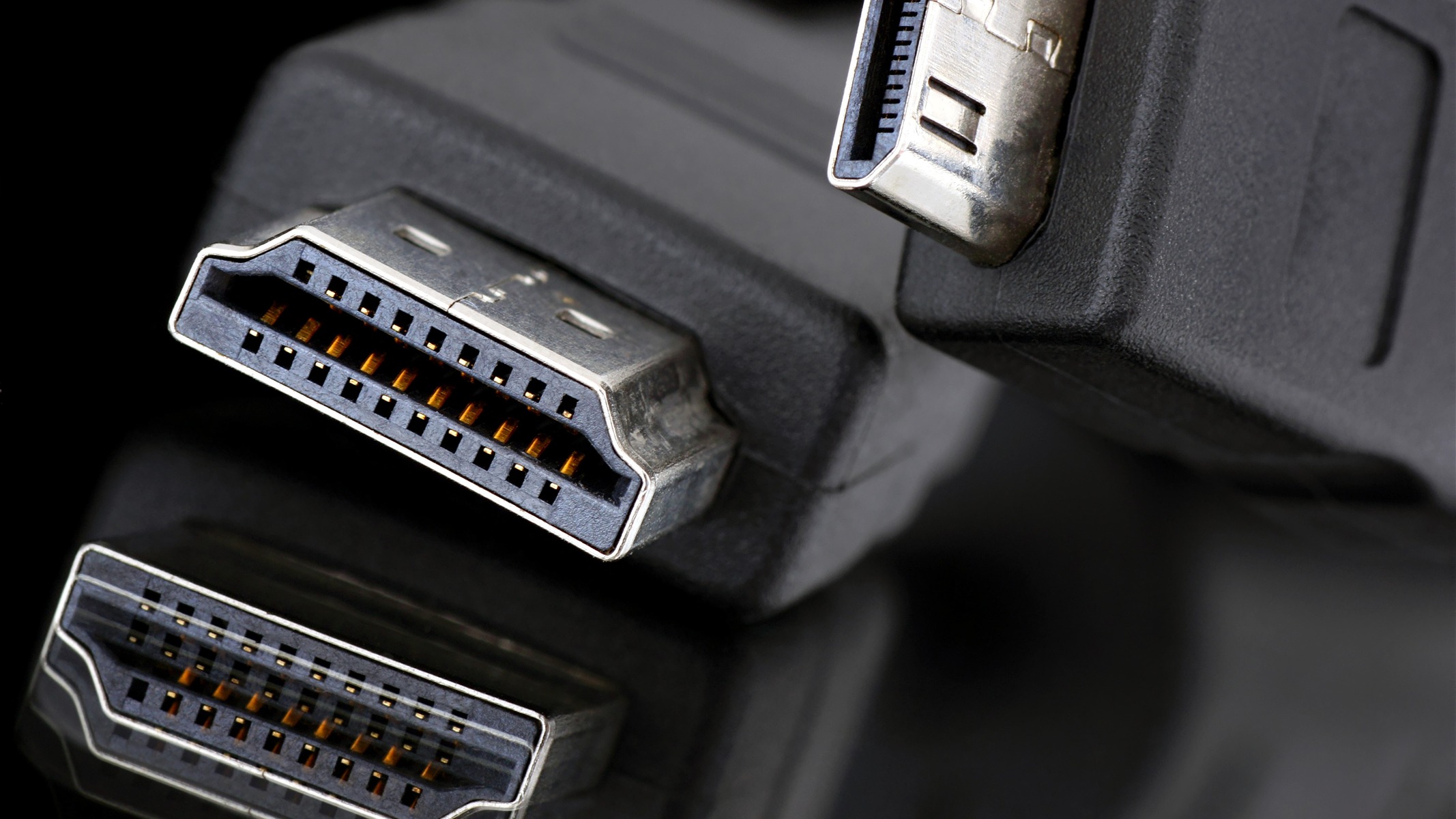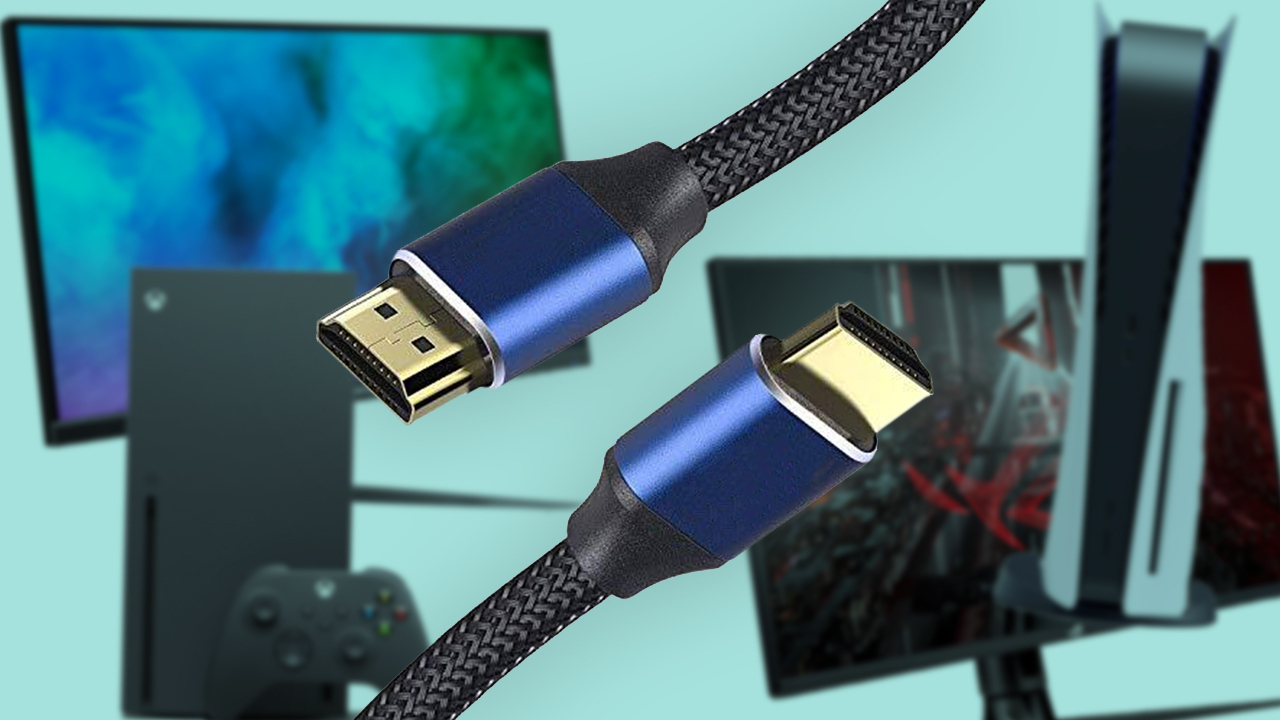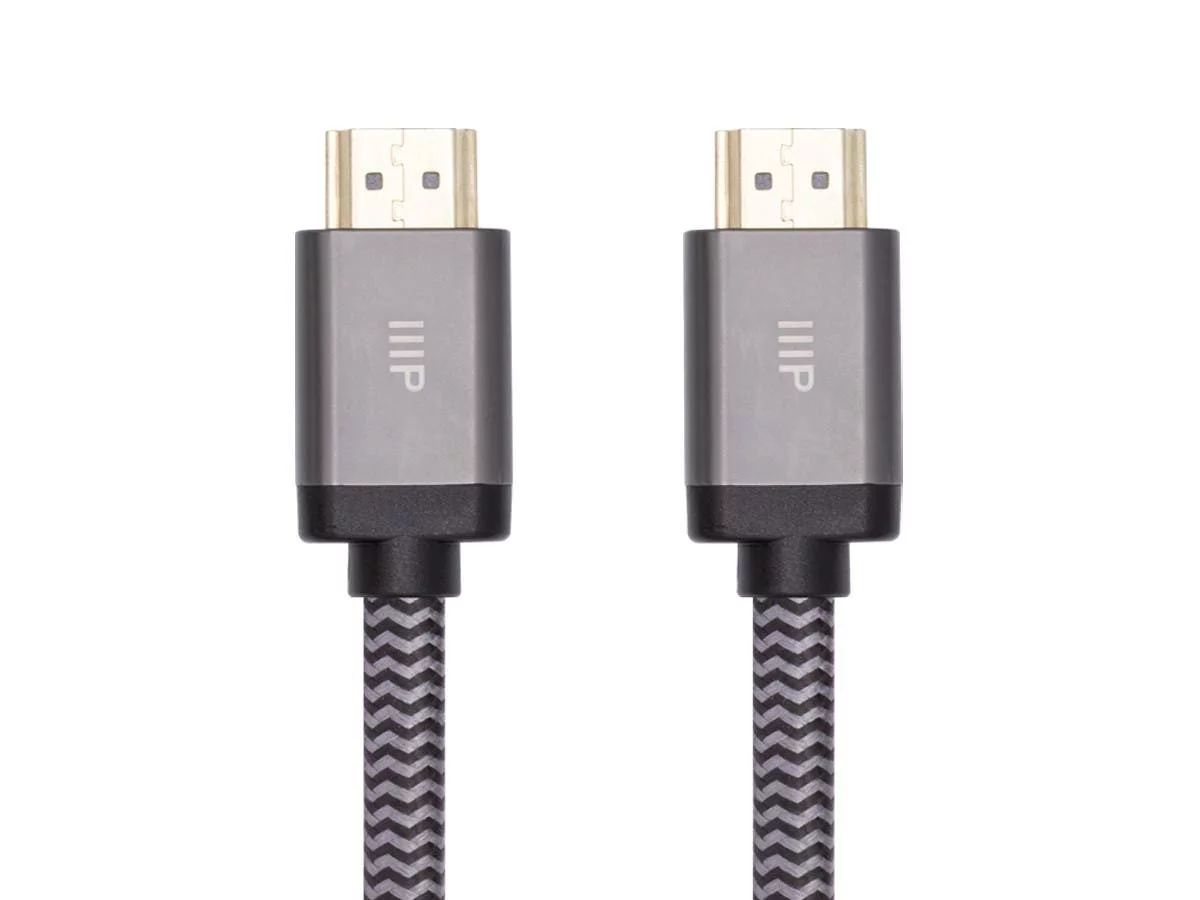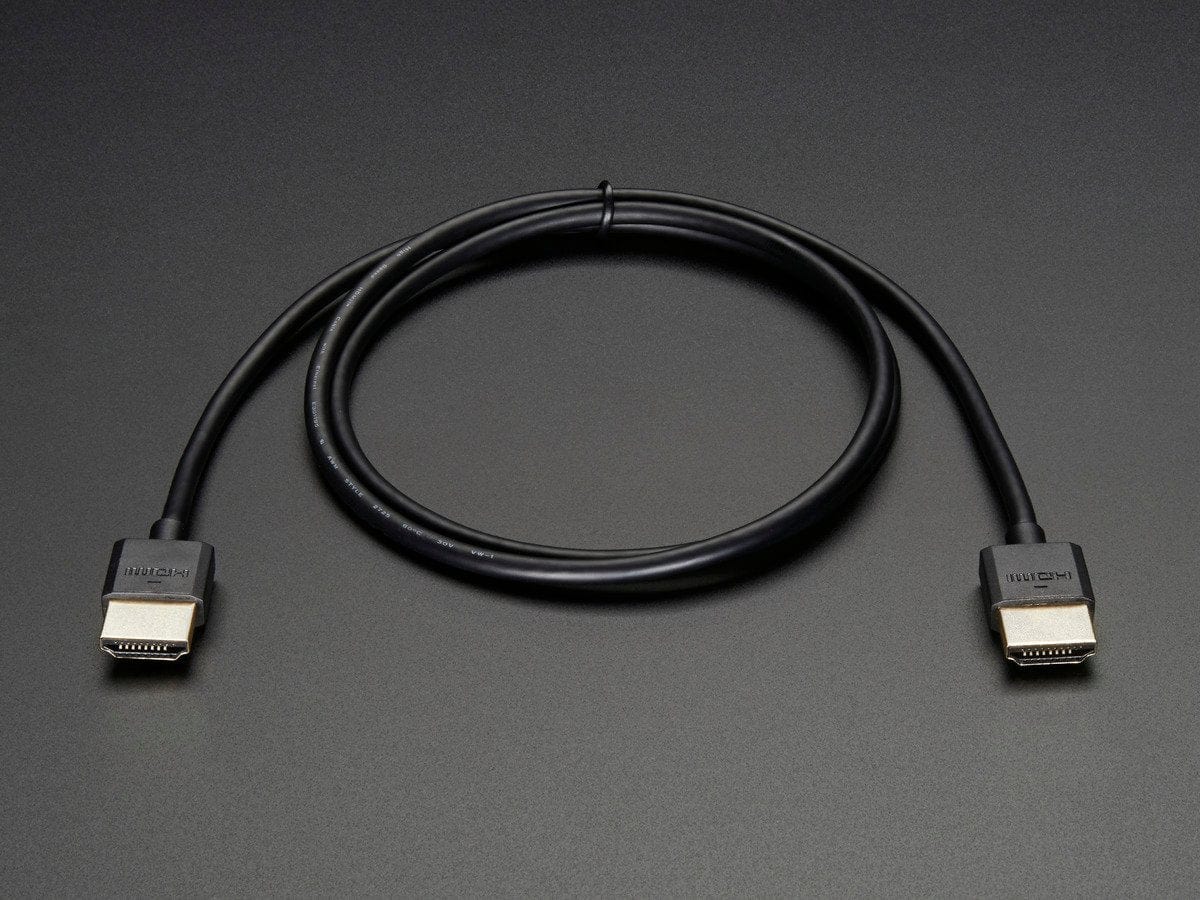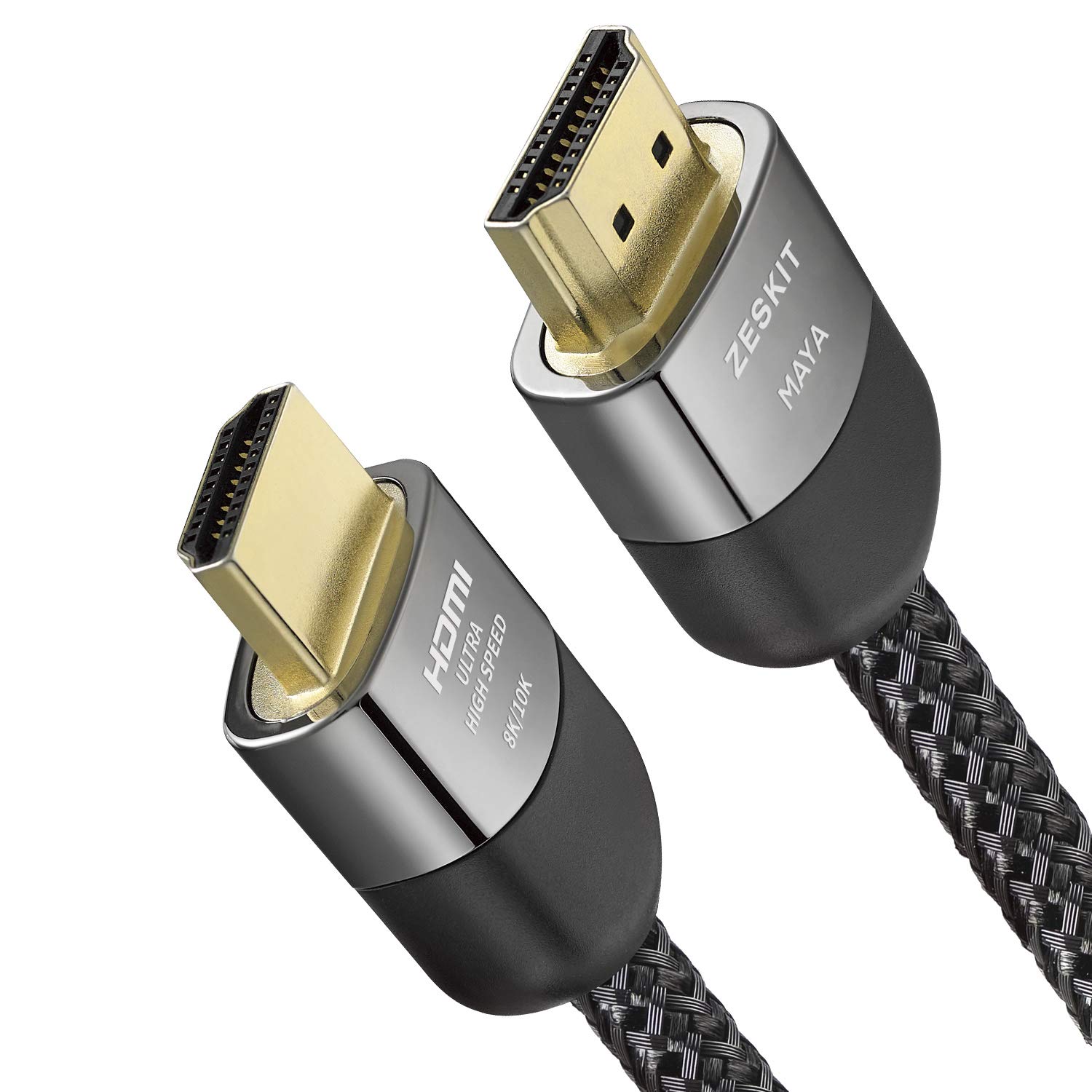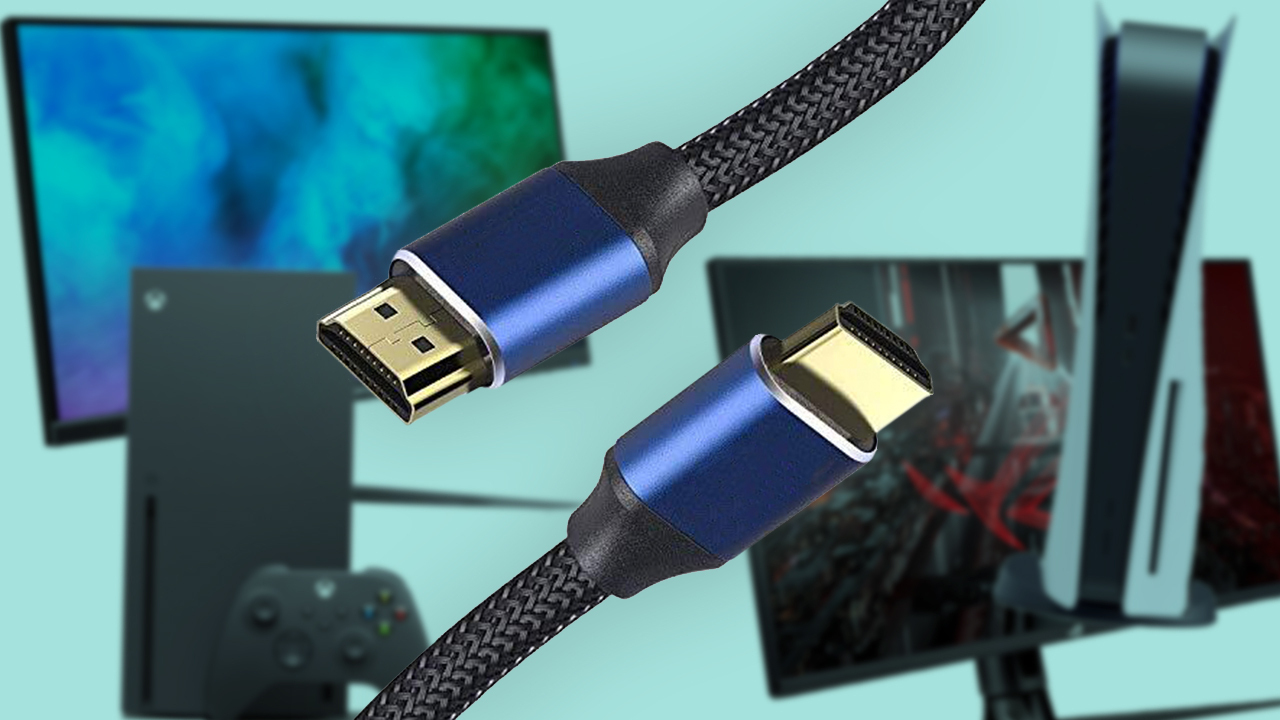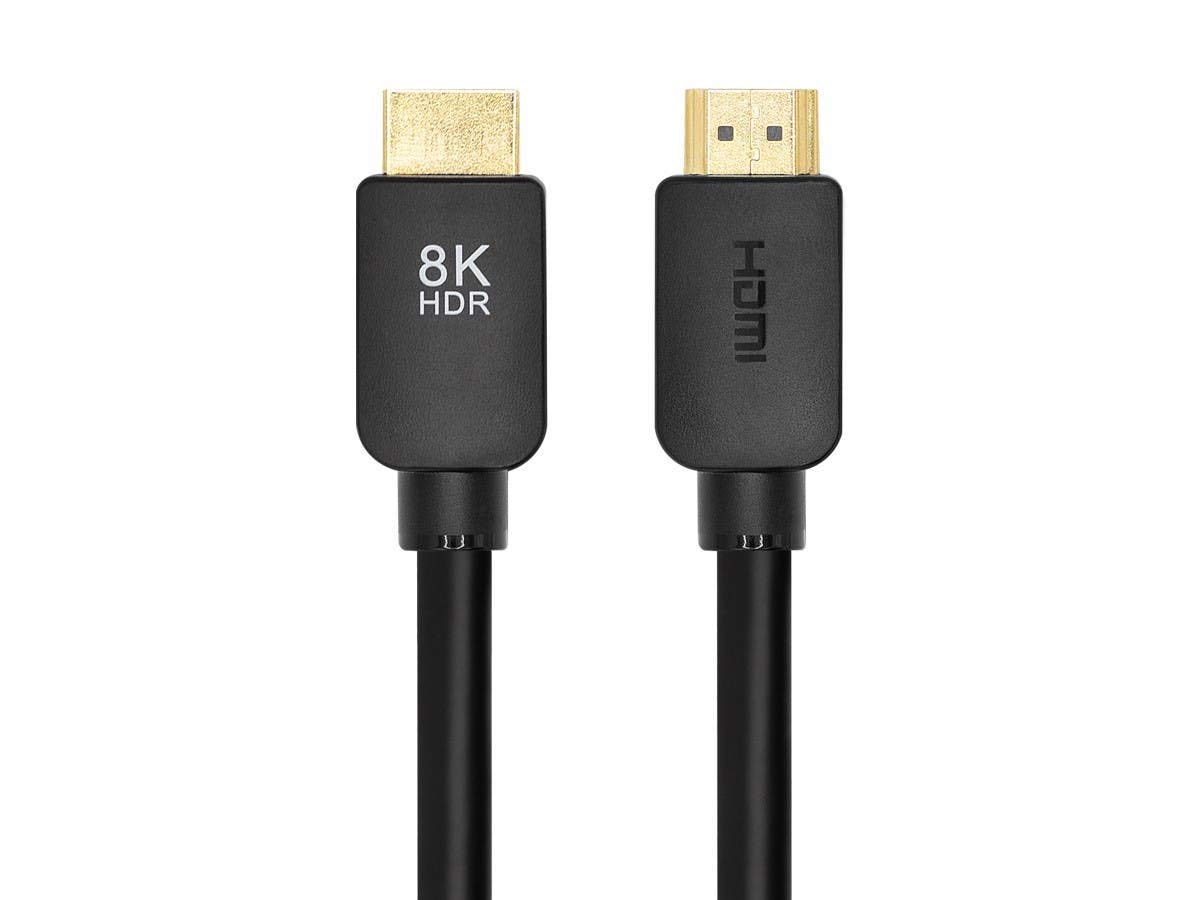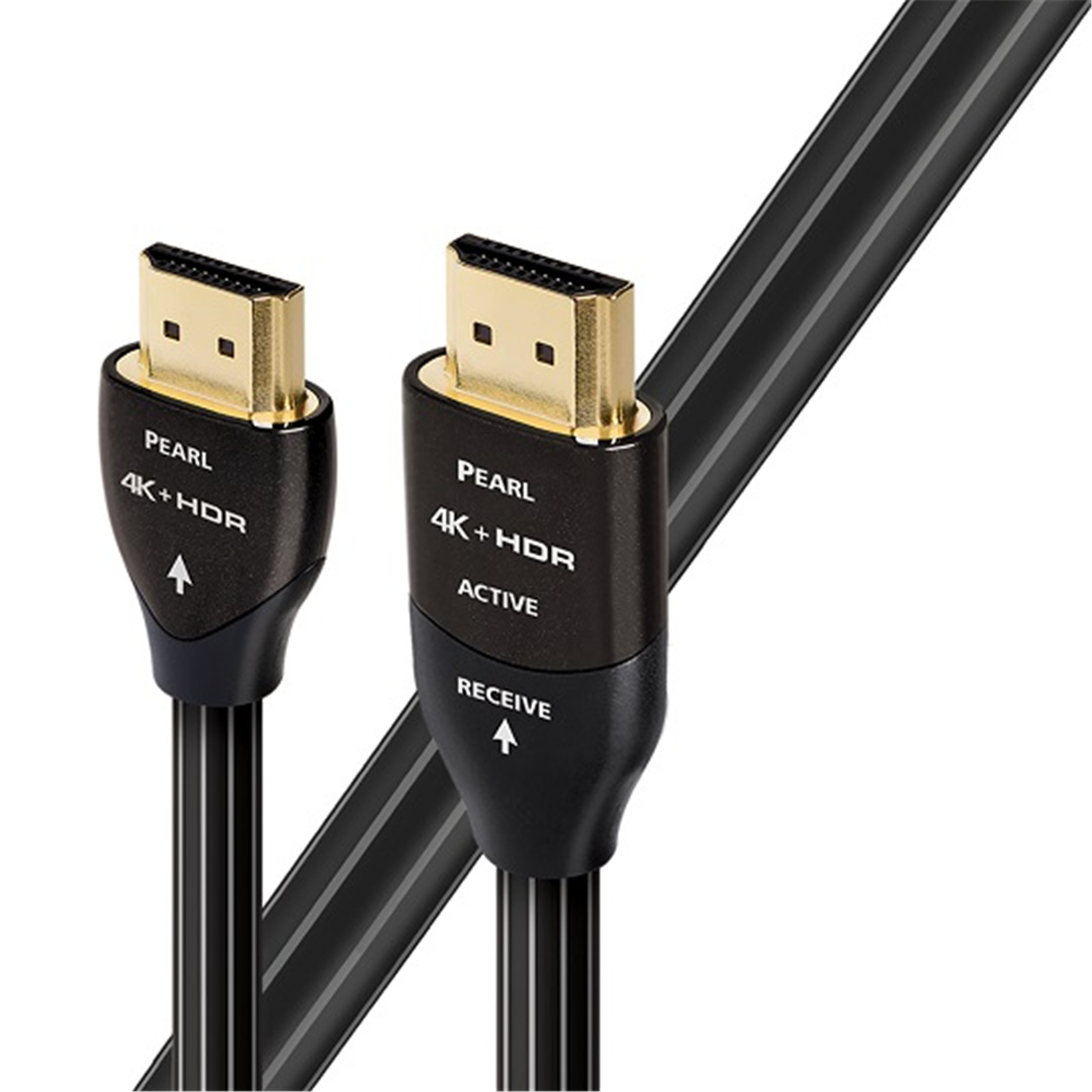Introduction
The world of technology is constantly evolving, and with each advancement comes a need for new and improved cables to support the latest innovations. When it comes to audio and video transmission, HDMI (High-Definition Multimedia Interface) cables have become the standard for connecting devices such as TVs, monitors, gaming consoles, and more. With the release of HDMI 2.1, a new generation of cables has emerged, offering enhanced features and capabilities.
HDMI 2.1 brings exciting improvements, including higher resolutions, faster refresh rates, and increased bandwidth. These advancements allow for stunning visuals, smooth gameplay, and immersive audio. However, as with any technology, there are limitations and factors to consider when it comes to the length of HDMI 2.1 cables.
In this article, we will explore the factors that can affect how long a HDMI 2.1 cable can be, the recommended cable lengths for optimal performance, and how to choose the right cable length for your specific setup. Additionally, we will examine the specifications of HDMI 2.1 cables and discuss methods for extending their length when needed.
Whether you’re a tech enthusiast, a gamer, or someone looking to upgrade their home entertainment system, understanding the capabilities and limitations of HDMI 2.1 cables will help you make informed decisions when it comes to setting up your devices and ensuring the best possible audio and video experience.
What is HDMI 2.1?
HDMI 2.1 is the latest version of the High-Definition Multimedia Interface standard, designed to provide the highest quality audio and video transmission between devices. It builds upon the previous versions, such as HDMI 2.0 and HDMI 1.4, and introduces significant improvements in terms of bandwidth, resolution, and features.
One of the notable enhancements of HDMI 2.1 is its increased bandwidth capacity. While HDMI 2.0 supported a maximum bandwidth of 18 Gbps, HDMI 2.1 can handle up to 48 Gbps. This substantial boost in bandwidth allows for higher resolutions and refresh rates, making it ideal for devices like 4K TVs, gaming consoles, and home theater systems.
With HDMI 2.1, you can enjoy breathtaking visuals with support for 8K resolution at 60Hz or 4K resolution at 120Hz. This means sharper images, smoother motion, and a more immersive viewing experience. Additionally, HDMI 2.1 introduces dynamic HDR (High Dynamic Range) support, enabling devices to adjust the picture quality on a scene-by-scene basis, resulting in more vibrant colors and improved contrast.
Aside from video improvements, HDMI 2.1 also brings enhancements to audio performance. It supports advanced audio formats like Dolby Atmos and DTS:X, delivering immersive, three-dimensional sound. HDMI 2.1 also introduces the eARC (Enhanced Audio Return Channel) feature, which enables the transmission of high-quality audio from your TV to a soundbar or AV receiver, eliminating the need for additional audio cables.
Furthermore, HDMI 2.1 supports several gaming-specific features. Variable Refresh Rate (VRR) and Quick Frame Transport (QFT) minimize screen tearing and input lag, providing smoother gameplay. Auto Low Latency Mode (ALLM) allows compatible devices, such as gaming consoles and displays, to automatically switch to a low-latency mode, optimizing performance for a more responsive gaming experience.
Overall, HDMI 2.1 is a significant advancement in audio and video transmission technology. Its increased bandwidth, support for higher resolutions and refresh rates, and various gaming features make it a crucial standard for those seeking the best possible audiovisual experience. Next, we’ll delve into the evolution of HDMI cables to understand how HDMI 2.1 fits into the bigger picture of connectivity between devices.
The Evolution of HDMI Cables
To fully understand HDMI 2.1 and its significance, it’s important to trace the evolution of HDMI cables and the role they have played in connecting audiovisual devices over the years. The HDMI standard was first introduced in 2002 as a replacement for various analog video formats like composite, component, and S-Video.
The initial HDMI 1.0 standard had a bandwidth of 4.95 Gbps, which was sufficient for transmitting high-definition content at that time. However, as technology advanced and the demand for higher resolutions grew, subsequent versions of HDMI were introduced, each offering improvements in bandwidth and features.
HDMI 1.3, released in 2006, increased the bandwidth to 10.2 Gbps and introduced features such as Deep Color and Dolby TrueHD and DTS-HD Master Audio support. This version paved the way for richer color gradations and high-definition audio formats, enhancing the overall audiovisual experience.
In 2009, HDMI 1.4 brought 3D support as well as an increased bandwidth of 10.2 Gbps for 4K resolution at 24 frames per second (fps). This version also introduced the HDMI Ethernet Channel (HEC), which allowed for internet connectivity via HDMI cables, eliminating the need for separate Ethernet cables in some scenarios.
With HDMI 2.0, released in 2013, the bandwidth was again increased to 18 Gbps, enabling support for 4K resolution at higher frame rates, such as 60 fps. HDMI 2.0 also introduced the availability of High Dynamic Range (HDR) for improved contrast and vibrant colors. This version proved to be a significant step forward in terms of supporting the emerging 4K displays and content.
Fast forward to the present, and we have HDMI 2.1, which represents the latest leap in HDMI technology. With its impressive bandwidth of up to 48 Gbps, HDMI 2.1 is capable of handling the demanding requirements of 8K resolution and higher refresh rates. This allows for incredibly detailed images with lifelike clarity and smooth, fluid motion.
In addition to the increased bandwidth, HDMI 2.1 introduces new features tailored specifically for gaming, such as Variable Refresh Rate (VRR) and Auto Low Latency Mode (ALLM). These features help eliminate screen tearing and reduce input lag, resulting in a more enjoyable and seamless gaming experience.
As technology continues to advance, HDMI cables have evolved to keep pace with the changing demands of modern audiovisual devices. HDMI 2.1 represents a significant milestone in this progression, offering higher bandwidth and advanced features that make it an essential component for connecting and enjoying the latest audiovisual technologies. In the next section, we will explore the factors that can impact the length of HDMI 2.1 cables and how to choose the right cable length for your setup.
The Factors Affecting HDMI Cable Length
When it comes to HDMI cable length, there are several factors that can influence the performance and reliability of the connection. It’s important to understand these factors to ensure optimal audio and video transmission between your devices. Let’s take a closer look at the key considerations:
1. Cable Quality: The quality of the HDMI cable plays a significant role in determining the maximum length it can reliably support. Higher quality cables are engineered to minimize signal loss and electromagnetic interference, resulting in better transmission over longer distances.
2. Signal Degradation: As a digital signal travels through an HDMI cable, it can experience degradation due to factors such as resistance, attenuation, and impedance mismatch. These elements can impact the signal strength, resulting in reduced clarity and potential glitches in the audio and video output.
3. Bandwidth: HDMI 2.1 cables support significantly higher bandwidth compared to previous versions. However, the length of the cable can impact the maximum achievable bandwidth. Longer cables may have more signal degradation, reducing the effective bandwidth and potentially limiting the display resolution and refresh rate.
4. Cable Construction: The construction of the HDMI cable can affect its maximum length. Thicker cables with larger conductors have lower resistance and better signal transmission capabilities. Twisted pair construction and shielding also help minimize interference and improve signal integrity.
5. Source and Display Devices: The capabilities of the source device (e.g., media player, gaming console) and the display device (e.g., TV, monitor) can influence the maximum length of the HDMI cable. Higher resolutions, refresh rates, and advanced features require more bandwidth and may have more stringent requirements for signal transmission, limiting the cable length.
6. Transmission Speed: The speed at which the digital signal is transmitted through the cable can impact signal integrity. Higher speeds may require shorter cable lengths to maintain a reliable connection without excessive signal degradation.
7. External Interference: HDMI cables are susceptible to external interference from nearby electrical and electronic devices, such as power cables, speakers, and wireless devices. These interferences can disrupt the signal transmission and impact the maximum achievable cable length.
It’s essential to consider these factors when choosing the appropriate HDMI cable length for your setup. While HDMI 2.1 cables offer increased bandwidth and improved performance, it’s still crucial to ensure that the cable length aligns with the capabilities of your source and display devices, as well as the overall quality and construction of the cable itself. In the next section, we will discuss the recommended HDMI 2.1 cable lengths for optimal performance in different scenarios.
Recommended HDMI 2.1 Cable Lengths
Choosing the right HDMI cable length is crucial to ensure optimal audio and video transmission quality. While HDMI 2.1 cables offer improved bandwidth and support for higher resolutions, the length of the cable can still impact the overall performance. Here are some recommended HDMI 2.1 cable lengths for different scenarios:
1. Home Theater Systems: For most home theater setups, a cable length of up to 6 feet (1.8 meters) is usually sufficient. This length allows for a direct and reliable connection between devices, such as a Blu-ray player, AV receiver, and a 4K or 8K TV. Keeping the cable length short minimizes the chances of signal loss and degradation.
2. Gaming Consoles: Gamers who want to take full advantage of the gaming features offered by HDMI 2.1, such as Variable Refresh Rate (VRR) and Auto Low Latency Mode (ALLM), may require slightly longer cables. In this case, a cable length of 10 feet (3 meters) is often recommended. This allows for flexibility in positioning the console and the display without sacrificing signal integrity.
3. Projectors: If you have a home theater projector setup, the distance between the projector and the video source may require longer cable lengths. In general, a cable length of 15 to 25 feet (4.5 to 7.5 meters) is sufficient for most projector installations. However, it’s important to choose high-quality cables to minimize potential signal degradation over longer distances.
4. Professional Installations: In commercial or professional installations, where devices are located farther apart or in different rooms, longer HDMI cable lengths may be necessary. In such cases, it’s recommended to use fiber optic HDMI cables, which can support much greater distances without signal loss or degradation. Fiber optic HDMI cables can range from 30 to 100 feet (9 to 30 meters) or even longer, depending on specific requirements.
While these recommended cable lengths serve as a general guideline, it’s important to consider factors such as cable quality, source-to-display distance, and the specific requirements of your setup. In some cases, it may be necessary to consult with a professional installer to ensure the best possible audio and video transmission quality.
It’s also worth mentioning that if you need to extend the reach of your HDMI 2.1 cable beyond the recommended lengths, there are solutions available such as HDMI extenders or HDMI over Ethernet adapters. These devices allow you to transmit the HDMI signal over longer distances by converting the signals into a different format or using network cables for transmission.
By considering the recommended HDMI 2.1 cable lengths and understanding the factors that influence signal transmission, you can ensure a seamless audio and video experience in your home entertainment or professional setup.
HDMI 2.1 Cable Specifications
HDMI 2.1 cables come with specific specifications that determine their performance capabilities. Understanding these specifications can help you choose the right cable for your audiovisual needs. Here are the key specifications of HDMI 2.1 cables:
1. Bandwidth: HDMI 2.1 cables support a maximum bandwidth of up to 48 Gbps. This significant increase in bandwidth allows for higher resolutions, faster refresh rates, and improved audio quality.
2. Resolution and Refresh Rates: HDMI 2.1 cables can handle various resolutions, including 8K at 60Hz and 4K at 120Hz. They also support lower resolutions, such as Full HD (1080p) and 2K (1440p), at higher refresh rates for smoother motion.
3. Dynamic HDR: HDMI 2.1 introduces Dynamic HDR, which allows the TV to optimize the picture quality dynamically on a frame-by-frame basis. This results in enhanced contrast, brighter colors, and improved overall visual quality.
4. Audio Formats: HDMI 2.1 supports advanced audio formats like Dolby Atmos, DTS:X, and Multichannel Uncompressed Audio, delivering immersive and high-quality audio experiences.
5. Enhanced Audio Return Channel (eARC): HDMI 2.1 cables incorporate eARC technology, allowing for the transmission of high-quality audio from the TV to sound systems, soundbars, or AV receivers. This eliminates the need for additional audio cables in your setup.
6. Game-Specific Features: HDMI 2.1 cables offer gaming-specific features, including Variable Refresh Rate (VRR) and Auto Low Latency Mode (ALLM). These features help reduce input lag, minimize screen tearing, and provide a smoother gaming experience.
7. Backward Compatibility: HDMI 2.1 cables are backward compatible with previous HDMI versions. This means you can use an HDMI 2.1 cable with devices that support older HDMI versions, but the advanced features of HDMI 2.1 may not be fully utilized.
When purchasing HDMI 2.1 cables, ensure that they are certified by HDMI Licensing Administrator, Inc. Look for the official HDMI 2.1 logo on the packaging to ensure compatibility with your HDMI 2.1-capable devices.
It’s worth noting that HDMI 2.1 cables do not have specific length specifications. Instead, the cable length limitations are based on factors such as signal degradation and the maximum achievable bandwidth. Therefore, it’s important to consider the recommended cable lengths based on your specific setup and requirements, as discussed earlier.
By understanding the specifications of HDMI 2.1 cables, you can make informed decisions when selecting the right cable for your audio and video needs. Whether you’re setting up a home theater system or connecting gaming consoles, HDMI 2.1 cables provide the necessary bandwidth and features to enjoy the latest audiovisual technologies.
Understanding HDMI 2.1 Cable Bandwidth
Bandwidth is a critical aspect of HDMI 2.1 cables that determines their ability to transmit data at high speeds. In the context of HDMI, bandwidth refers to the volume of data that can be transmitted over the cable within a specific time frame. Understanding HDMI 2.1 cable bandwidth is essential for ensuring optimal audio and video performance. Let’s delve into the details:
HDMI 2.1 cables have a maximum bandwidth of 48 Gbps (Gigabits per second). This is a substantial increase compared to the 18 Gbps maximum bandwidth of HDMI 2.0 cables. The increased bandwidth of HDMI 2.1 allows for the transmission of larger amounts of data, resulting in higher resolutions, faster refresh rates, and improved audio quality.
The higher bandwidth of HDMI 2.1 cables is particularly significant for applications involving 8K resolution. With 8K content requiring a substantial amount of data to be transmitted, HDMI 2.1 provides the necessary bandwidth to facilitate a smooth and seamless viewing experience with richly detailed visuals.
In addition to 8K resolution, HDMI 2.1 cables can also handle other resolutions, including 4K at higher refresh rates and lower resolutions like Full HD (1080p) and 2K (1440p) at even higher refresh rates. The increased bandwidth ensures that the data for these resolutions can be transmitted without loss of quality or compromised performance.
It’s important to note that the length of the HDMI 2.1 cable can impact the achievable bandwidth. Longer cable lengths may experience more signal degradation, resulting in reduced effective bandwidth. To maximize the benefits of HDMI 2.1, it’s recommended to choose cable lengths that align with the capabilities of your source and display devices, as well as the overall quality and construction of the cable itself.
It’s also worth mentioning that the bandwidth of HDMI 2.1 cables allows for the transmission of advanced audio formats, such as Dolby Atmos and DTS:X, ensuring immersive and high-quality audio experiences. Additionally, HDMI 2.1 cables support the Enhanced Audio Return Channel (eARC), enabling the transmission of high-quality audio from the TV back to the soundbar or AV receiver, eliminating the need for separate audio cables.
Understanding HDMI 2.1 cable bandwidth is crucial for optimizing your audiovisual setup. By selecting HDMI 2.1 cables that can support the required bandwidth for your specific needs, you can ensure the seamless transmission of high-resolution video and immersive audio. It’s important to keep in mind the impact of cable length as well as the overall quality and compatibility of the devices in your setup. With HDMI 2.1 cables, you can unlock the full potential of the latest audio and video technologies for a truly captivating multimedia experience.
How to Choose the Right HDMI 2.1 Cable Length
Choosing the right HDMI 2.1 cable length is crucial for ensuring optimal audio and video performance in your setup. Here are some key factors to consider when selecting the appropriate cable length for your needs:
1. Determine Source-to-Display Distance: Measure the distance between your video source (e.g., media player, gaming console, Blu-ray player) and the display device (e.g., TV, monitor, projector). This will give you a rough idea of the cable length required to establish a direct connection between the devices. It’s important to choose a cable length that is slightly longer than the distance to allow for flexibility in device placement.
2. Consider Room Layout and Cable Routing: Evaluate the room layout and plan how the HDMI cable will be routed from the source device to the display device. Take into account any obstacles or furniture that may require longer cable lengths or alternative routing options.
3. Assess Cable Quality: Opt for high-quality HDMI 2.1 cables from reputable brands. These cables are designed to minimize signal loss and interference, ensuring reliable transmission over longer distances. Cheap or low-quality cables may not provide the same level of performance and could result in poor audio and video quality.
4. Maximum Resolution and Refresh Rate: Consider the capabilities of your display device and the content you intend to watch or play. If you have a 4K TV with a high refresh rate or plan to upgrade to an 8K display in the future, choose a cable length that can support the maximum resolution and refresh rate for optimal visual experience.
5. Gaming Considerations: If you’re a gamer, consider factors such as input lag, screen tearing, and the gaming features supported by HDMI 2.1, such as Variable Refresh Rate (VRR) and Auto Low Latency Mode (ALLM). Longer cable lengths can potentially introduce additional signal degradation, impacting gaming performance. Ensure that the cable length chosen allows for an immersive and responsive gaming experience.
6. Room for Future Expansion: If you anticipate changes in your setup, such as adding new devices or rearranging the room, it’s wise to choose a slightly longer cable length that provides room for future expansion. This will save you from the hassle of purchasing a new cable later on.
Remember that HDMI 2.1 cables do not have a specific maximum length. The maximum achievable length depends on factors such as cable quality, signal degradation, and the resolution and refresh rate requirements of your setup. It’s recommended to refer to the manufacturer’s specifications and seek professional advice for longer cable lengths or complex installations.
By considering these factors, you can choose the right HDMI 2.1 cable length that aligns with your setup’s needs, provides the best possible audio and video transmission, and allows for future expansion. Investing in a high-quality HDMI 2.1 cable of the appropriate length will ensure a seamless and immersive audiovisual experience for your home entertainment system or professional setup.
Extending HDMI 2.1 Cable Lengths
In some cases, you may need to extend the length of your HDMI 2.1 cable to overcome distance limitations or accommodate specific setup requirements. Fortunately, there are several options available for extending HDMI 2.1 cable lengths while maintaining signal integrity. Here are some methods to consider:
1. HDMI Extenders: HDMI extenders are devices that allow you to extend the reach of your HDMI 2.1 cable by converting the HDMI signal into a format that can be transmitted over longer distances. These extenders typically come in two parts – a transmitter that connects to the video source and a receiver that connects to the display device. The transmitter and receiver are connected via Ethernet or fiber optic cables, allowing for extended cable lengths without significant signal degradation.
2. HDMI over Ethernet (HDBaseT): HDBaseT technology enables the extension of HDMI signals over standard Ethernet cables. HDBaseT HDMI extenders use Cat5e/Cat6 Ethernet cables to transmit audio, video, and control signals over longer distances, even up to 100 meters (328 feet). This method is particularly useful for professional installations or setups where the video source and display device are located far apart.
3. HDMI Repeater: HDMI repeaters are devices that amplify and regenerate the HDMI signal, allowing for longer cable lengths without signal degradation. They are often used in situations where the cable length exceeds the recommended limit. HDMI repeaters can be placed at specific intervals along the length of the cable to ensure a reliable and high-quality signal transmission.
4. Fiber Optic HDMI Cables: Fiber optic HDMI cables are specifically designed to transmit HDMI signals over longer distances while maintaining maximum signal integrity. These cables use fiber optic technology to convert the electrical HDMI signal into light and transmit it via optical fibers. Fiber optic HDMI cables can support cable lengths of up to 100 feet (30 meters) or more, making them ideal for applications that require longer distances without compromising signal quality.
When extending HDMI 2.1 cable lengths, it’s important to ensure that the extension method used is compatible with HDMI 2.1 specifications. HDMI extenders and repeaters should support HDMI 2.1 bandwidth and features to fully utilize the capabilities of HDMI 2.1 cables.
Additionally, it’s crucial to select high-quality extenders, repeaters, or fiber optic cables that maintain signal integrity and provide reliable transmission. Lower-quality solutions may introduce signal degradation or compatibility issues, resulting in reduced audiovisual performance.
Before extending HDMI 2.1 cable lengths, it’s recommended to consult with professionals or seek guidance from experienced installers who can offer expertise and ensure that the chosen method is suitable for your specific setup.
Ultimately, by using appropriate HDMI extenders, HDMI over Ethernet technology, repeaters, or fiber optic cables, you can extend the length of your HDMI 2.1 cables without sacrificing audio and video quality, opening up possibilities for more flexible and versatile setups.
Conclusion
HDMI 2.1 cables are a significant step forward in audio and video transmission technology, offering higher resolutions, faster refresh rates, and enhanced features. Understanding the factors that can affect HDMI 2.1 cable length is essential for ensuring optimal performance and reliable connectivity between devices. By considering aspects such as cable quality, signal degradation, and the specific requirements of your setup, you can choose the right HDMI 2.1 cable length for your needs.
It’s important to note that the recommended cable lengths may vary depending on the application. For home theater systems or gaming consoles, shorter cable lengths of up to 6 feet (1.8 meters) or 10 feet (3 meters) are generally suitable. In installations involving projectors or professional setups, longer HDMI 2.1 cable lengths, including fiber optic cables, may be required.
When selecting HDMI 2.1 cables, consider their specifications, such as bandwidth, resolution support, dynamic HDR, and audio formats. Choosing high-quality cables that adhere to HDMI 2.1 standards ensures optimal audio and video performance.
In cases where the cable length needs to be extended, HDMI extenders, HDMI over Ethernet (HDBaseT) technology, HDMI repeaters, or fiber optic cables can be used to maintain signal integrity over longer distances.
Remember to consult professionals or experienced installers if you have complex setups or require assistance with cable extensions.
With the right HDMI 2.1 cable length and proper consideration of all factors, you can enjoy the full capabilities of HDMI 2.1 and take advantage of its superior audio and video transmission for an immersive and captivating audiovisual experience in your home or professional setting.







